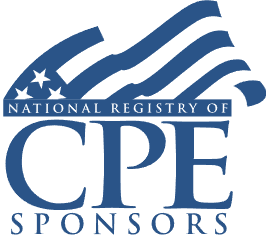Foreign Personal Holding Company Income Reporting: Mastering Subpart F Inclusions and Deemed Dividend Rules
Navigating Foreign Tax Credit Passive Buckets, Look-Through Recharacterizations, and More

Welcome! Strafford is now BARBRI! The expert courses you know from the trusted global leader in legal education.
Course Details
- smart_display Format
On-Demand
- signal_cellular_alt Difficulty Level
Intermediate
- work Practice Area
Tax Preparer
- event Date
Thursday, May 11, 2017
- schedule Time
1:00 PM E.T.
- timer Program Length
110 minutes
-
BARBRI is a NASBA CPE sponsor and this 110-minute webinar is accredited for 2.0 CPE credits.
-
BARBRI is an IRS-approved continuing education provider offering certified courses for Enrolled Agents (EA) and Tax Return Preparers (RTRP).
This course will provide tax advisers with a deep exploration of the reporting of income from and ownership of a foreign personal holding company. The panel will identify the tests for determining whether an investment qualifies as a FPHC, outline what qualifies as foreign personal holding company income (FPHCI), discuss attribution and constructive ownership rules, and offer useful tools for minimizing and reporting FPHCI.
Faculty

Mr. Ghassemieh's practice focuses on assisting companies of all sizes, in all business and tax matters, including advising closely held businesses to establish new business entities, advising on regulatory and tax matters, succession planning, and tax efficient planning for purchases or sales of existing businesses. He also provides tax consulting services to clients with international operations. His clients include both U.S.–based companies that have expanded abroad and foreign companies with U.S. ties. He also consults with U.S.–based exporting companies to determine whether they qualify for IC–DISC tax incentive benefits, and assists in both implementation and maintenance of IC–DISC structures.

Mr. Skinner focuses his practice on U.S. international taxation, with a particular emphasis on tax planning and international corporate transactions. He has broad experience in international tax issues for U.S. corporations, foreign corporations, and high net-worth individuals, and has represented clients across a variety of industries. He teaches international taxation as an adjunct professor in San Jose State University’s MST program, and speaks and writes frequently on international and corporate tax issues.
Description
A significant challenge for tax advisers serving clients with offshore holding companies is identifying, calculating and reporting foreign personal holding company income (FPHCI). From determining whether a U.S. taxpayer actually has a reportable ownership interest in an FPHCI to determining what income must be reported, tax advisers often face complex compliance challenges in calculating current tax on FPHC ownership and income.
Foreign personal holding company rules fall under the Subpart F regime. Section 954(c) defines an FPHC as a foreign entity that holds assets that generate passive income such as interest, dividends, and gains from sale of passive income-generating assets. However, the FPHC rules have numerous exceptions, as well as look-through rules that can recharacterize dividend payments based on the character of the income by the related payer to the holding company.
Identifying FPHCI is critical in determining whether undistributed income must be recognized as currently taxable under the Subpart F rules, and whether the income must be classified in the “passive bucket” for purposes of foreign tax credit calculations and limitations. Tax advisers serving clients with foreign holding companies should have an in-depth knowledge of the FPHCI rules to avoid unnecessary tax consequences.
Listen as our experienced panel goes beyond the basics to provide a deep and practical guide to the FPHCI rules, offering useful tools for both compliance and planning challenges.
Outline
- Identifying FPHCI through ownership and income tests
- Indirect ownership
- Ownership attribution rules
- Treaty exclusions from gross income calculations
- Reporting FPHC holdings and income
- Treatment of undistributed FPHCI
- Look-through provisions on distributions from related entities
- Calculating foreign tax credit “buckets” for FPHCI
Benefits
The panel will discuss these and other important questions:
- What passive activities qualify for exclusion from FPHCI calculations?
- How do the look-through rules operate to recharacterize certain dividend payments?
- What is the reporting treatment of the sale of FPHC ownership interests?
- How do the attribution rules function in determining ownership of an FPHC interest?
NASBA Details
Learning Objectives
After completing this course, you will be able to:
- Recognize what constitutes both direct ownership and indirect ownership (through attribution rules) of an FPHC
- Discern what FPCHI must be reported as currently taxable
- Determine how to allocate FPHCI in appropriate foreign tax credit “buckets”
- Identify appropriate tax reporting treatment of sales of FPHC interests
- Field of Study: Taxes
- Level of Knowledge: Intermediate
- Advance Preparation: None
- Teaching Method: Seminar/Lecture
- Delivery Method: Group-Internet (via computer)
- Attendance Monitoring Method: Attendance is monitored electronically via a participant's PIN and through a series of attendance verification prompts displayed throughout the program
- Prerequisite: Three years+ business or public firm experience at mid-level within the organization, preparing complex tax forms and schedules, supervising other preparers/accountants. Specific knowledge and understanding of foreign tax credit rules and passive/portfolio income definitions; familiarity with Subpart F income inclusions and deemed dividend provisions. Foundational knowledge of the Subpart F and Foreign Tax Credit rules.

Strafford Publications, Inc. is registered with the National Association of State Boards of Accountancy (NASBA) as a sponsor of continuing professional education on the National Registry of CPE Sponsors. State boards of Accountancy have final authority on the acceptance of individual courses for CPE Credits. Complaints regarding registered sponsons may be submitted to NASBA through its website: www.nasbaregistry.org.

Strafford is an IRS-approved continuing education provider offering certified courses for Enrolled Agents (EA) and Tax Return Preparers (RTRP).
Unlimited access to premium CLE courses:
- Annual access
- Available live and on-demand
- Best for attorneys and legal professionals
Unlimited access to premium CPE courses.:
- Annual access
- Available live and on-demand
- Best for CPAs and tax professionals
Unlimited access to premium CLE, CPE, Professional Skills and Practice-Ready courses.:
- Annual access
- Available live and on-demand
- Best for legal, accounting, and tax professionals
Unlimited access to Professional Skills and Practice-Ready courses:
- Annual access
- Available on-demand
- Best for new attorneys
Related Courses
Recommended Resources
How CPE Can Bridge the Gap Between What You Know and What You Need to Know
- Career Advancement
